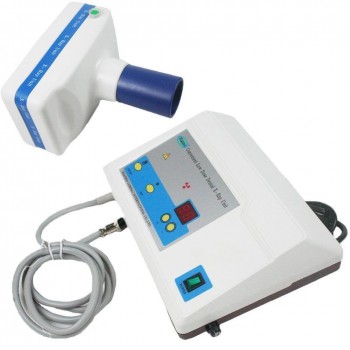There are numerous manufacturers in providing some type of hardness disc to verify that a dental curing light will polymerize a specific thickness of composite in a specified amount of time. Most of these discs have a small hole in the center. For this test, you fill the hole in the disc with the composite, cure it for a specified time period, and then turn over the disk to check whether the bottom surface of the cured composite “feels” like the disc when scratched with an explorer or other sharp instrument. If it does, then this presumably indicates the composite is adequately cured for intraoral( intraoral camera ) use.
However, this is a dangerous test that could give you false and misleading information. Consider what we found with the Demetron Hardness Tester, which is essentially a round white plastic disc with three holes. We filled the three holes in the disc with our test composite and cured each composite specimen 5 seconds, 10 seconds, or 40 seconds. We then turned over the disk and tested the bottom of each cured composite disc as well as the Hardness Tester itself for Knoop hardness. Finally, we asked three of our research staff to scratch the bottoms of the specimens with a sharp explorer and compare the “feel” to that of the Hardness Tester.
Measure the power baseline for your light when it is new using a radiometer and remeasure it on a weekly basis. For halogen types, if there is a significant decrease in output, change the bulb. If that doesn’t help, try a different curing tip. If it still does not register an adequate reading, try cleaning the tip and filter with a kit designed for that purpose. If all your remedies are not successful, you should send the light back to the manufacturer for a check-up.
Even with this testing, it is prudent to send your lights back to the manufacturer at specific intervals, such as every 24 months or after five bulb changes (if halogen), whichever comes first. This type of maintenance will keep your curing light in top condition and allow it to deliver maximum power.
Many directions include some strange safety measures such as using the light for 20 seconds and letting it rest for 60 seconds. Another one tells you not to use the light if the patient is on N2O/O2. These stipulations are mandated by various government regulations and manufacturers must comply if they want to sell the product internationally. Don’t let these warnings stop you from using the lights in a normal manner.
On the other hand, with LEDs that do not have fans, you are typically advised to limit their continuous use to several minutes and then allow them to cool off. While we have subjected these lights to extended curing tests and many of them have passed these tests, it is probably prudent to heed this type of warning and not subject the equipment to heat challenges that can shorten their useful lives.
